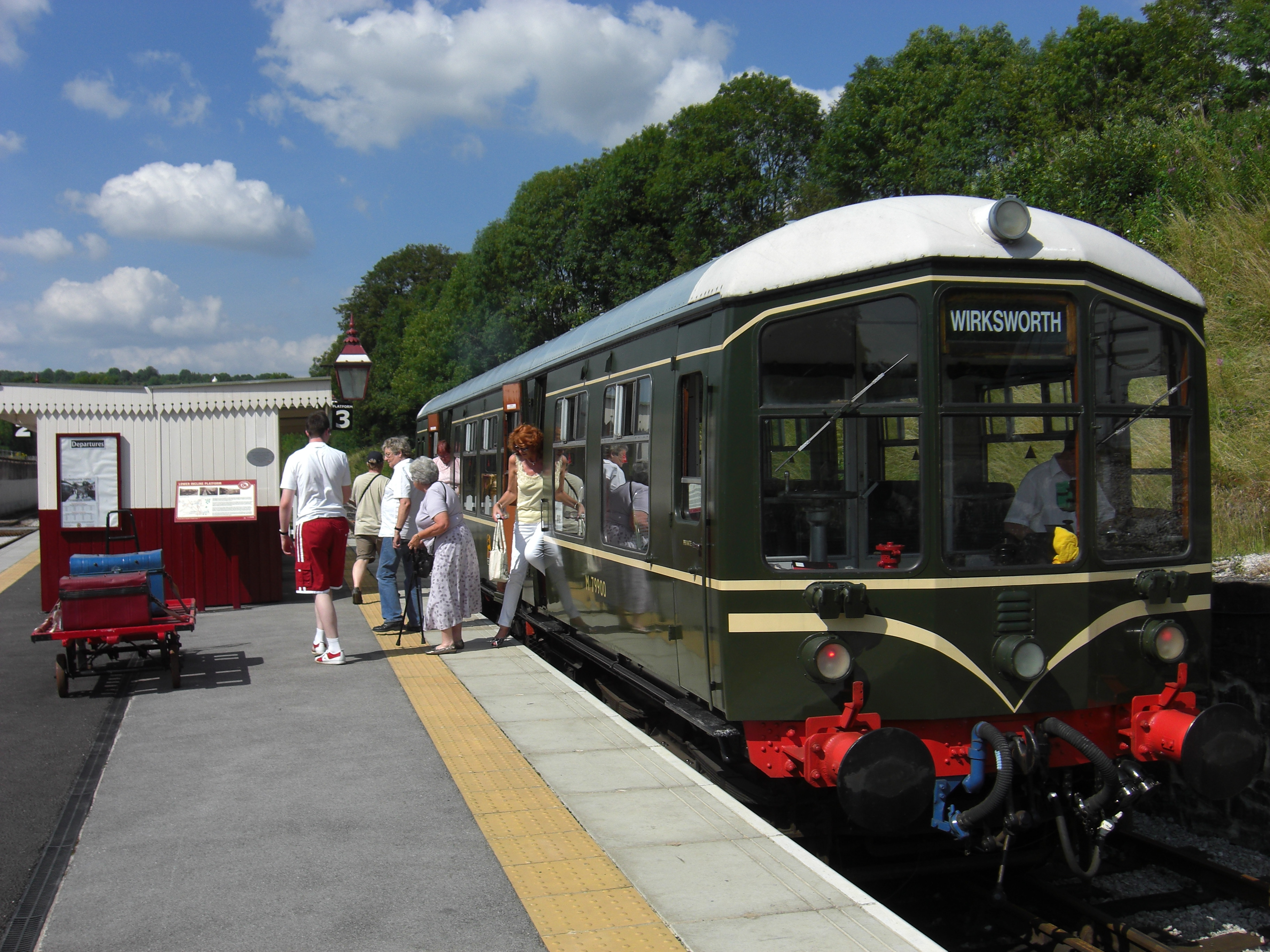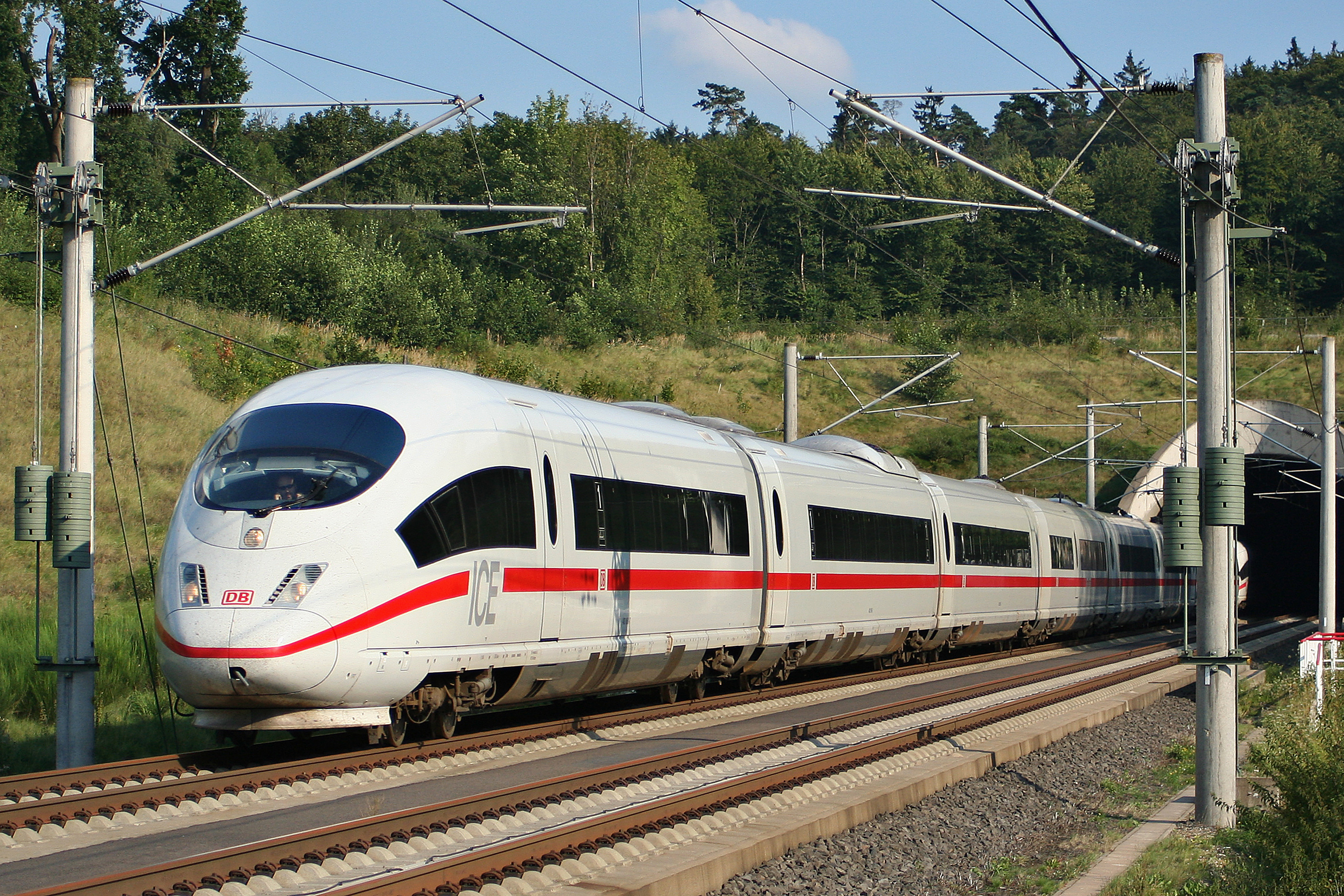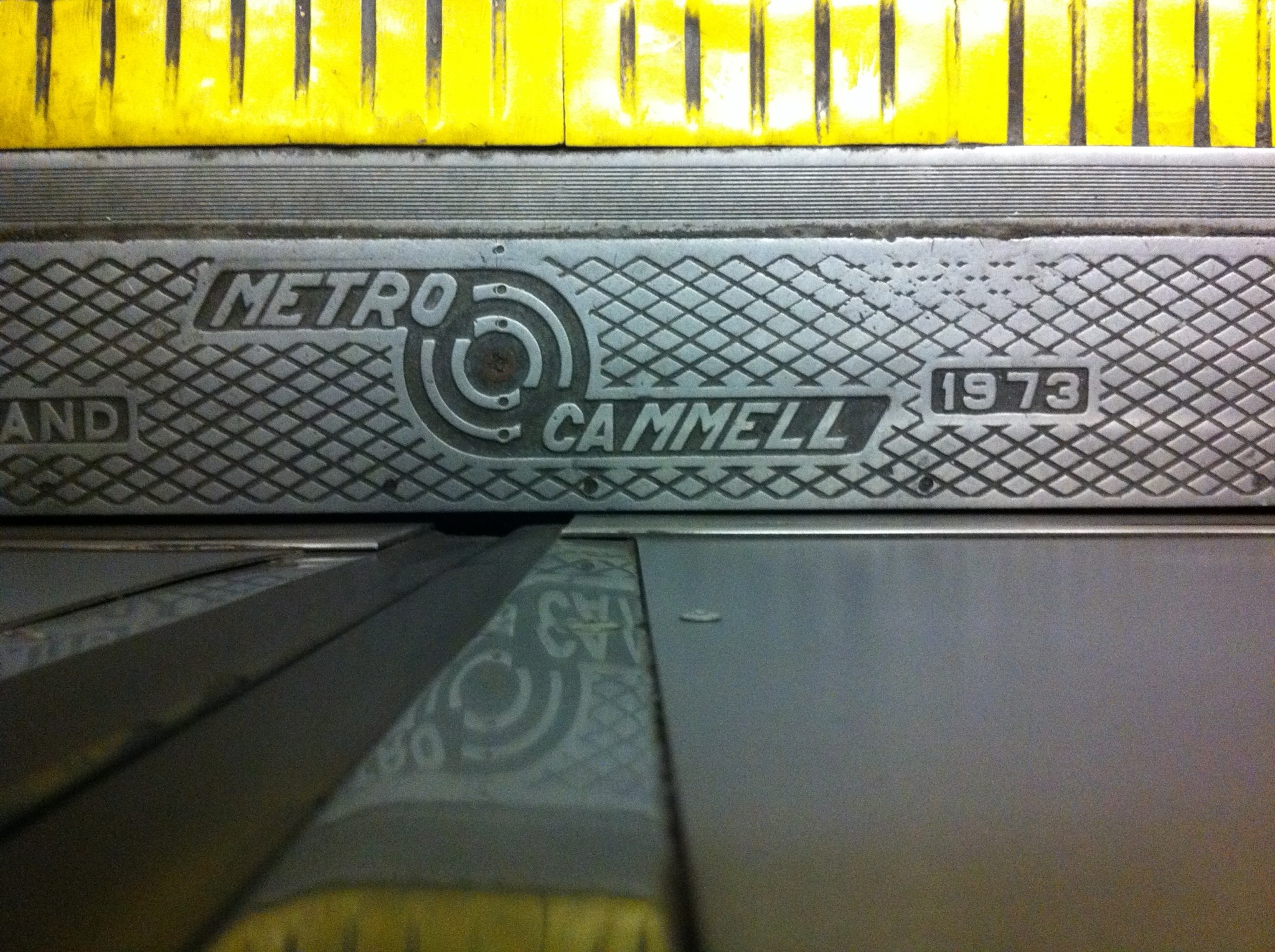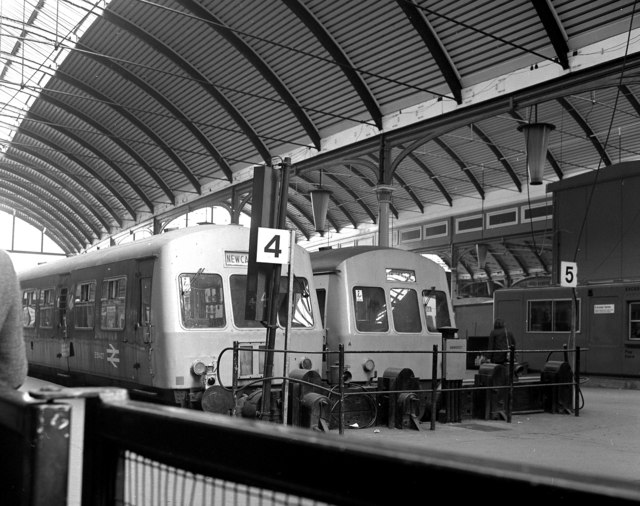|
List Of British Rail Diesel Multiple Unit Classes
This is a list of British Rail diesel multiple-unit train classes. For a historical overview of diesel multiple unit train development in Great Britain, see British railcars and diesel multiple units. Pre-nationalisation designs * GWR railcars * LMS railcars First generation Early BR DMUs (79xxx series) TOPS classes Second generation Lightweight railcars Pacers Sprinters Turbos Networker Turbostar Coradias Desiro Civity Diesel-electric multiple units (DEMUs) Southern Region DEMUs Second Generation Voyager-style express DEMUs High-speed trains See also * List of British Rail classes * List of British Rail modern traction locomotive classes * List of British Rail electric multiple unit classes * British Rail locomotive and multiple unit numbering and classification * British Rail coach type codes References External links * {{British Rail DMU British Rail diesel multiple units, List British railway-related lists, British Rail diesel multipl ... [...More Info...] [...Related Items...] OR: [Wikipedia] [Google] [Baidu] |
Multiple Unit
A multiple-unit train (or multiple unit (MU)) is a self-propelled train composed of one or more Coach (rail), carriages joined, and where one or more of the carriages have the means of propulsion built in. By contrast, a locomotive-hauled train has all of the carriages unpowered. An implication of this is that all the powered carriages needs to be controllable by a single engineer or driver, which is a case of the broader concept of multiple-unit train control. In other words, all "multiple units" employ some variation of multiple-unit train control. In the broader context "unit" means any powered rail vehicle, including locomotives (that does not carry cargo) and powered cargo-carrying carriages. In the context of this article, "unit" refers specifically to the latter only (whether the cargo is passengers or some other cargo). What follows is that if coupled to another multiple unit, all MUs can still be controlled by the single driver, with multiple-unit train control. ... [...More Info...] [...Related Items...] OR: [Wikipedia] [Google] [Baidu] |
Leeds Middleton Railway - Geograph
Leeds is a city in West Yorkshire, England. It is the largest settlement in Yorkshire and the administrative centre of the City of Leeds Metropolitan Borough, which is the second most populous district in the United Kingdom. It is built around the River Aire and is in the eastern foothills of the Pennines. The city was a small manorial borough in the 13th century and a market town in the 16th century. It expanded by becoming a major production and trading centre (mainly with wool) in the 17th and 18th centuries. Leeds developed as a mill town during the Industrial Revolution alongside other surrounding villages and towns in the West Riding of Yorkshire. It was also known for its flax industry, iron foundries, engineering and printing, as well as shopping, with several surviving Victorian era arcades, such as Kirkgate Market. City status was awarded in 1893, and a populous urban centre formed in the following century which absorbed surrounding villages and overtook the popula ... [...More Info...] [...Related Items...] OR: [Wikipedia] [Google] [Baidu] |
Birmingham Railway Carriage & Wagon Company
The Birmingham Railway Carriage and Wagon Company (BRC&W) was a railway locomotive and carriage builder, founded in Birmingham, England and, for most of its existence, located at nearby Smethwick, with the factory divided by the boundary between the two places. The company was established in 1854. Production BRC&W made not only carriages and wagons, but a range of vehicles, from aeroplanes and military gliders to buses, trolleybuses and tanks. Nevertheless, it is as a builder of railway rolling stock that the company is best remembered, exporting to most parts of the new and old worlds. It supplied vehicles to all four of the pre-nationalisation "big four" railway companies ( LMS, SR, LNER and GWR), British Rail, Pullman (some of which are still in use) and Wagons-Lits, plus overseas railways with diverse requirement including Egypt, India, Iraq, Malaya, Mandate Palestine, South Africa and Nigeria. The company even built, in 1910, Argentina's presidential coach, whic ... [...More Info...] [...Related Items...] OR: [Wikipedia] [Google] [Baidu] |
British Rail Class 104
The British Rail Class 104 diesel multiple units were built by Birmingham Railway Carriage and Wagon Company from 1957 to 1959. A product of British Rail's Modernisation Plan of 1954, the 104s were designed for general branch line and commuter routes. The first units ordered were for the London Midland Region, with the majority of the class for use in North West of England. The Class 110 was a re-engineered version of the 104 with more powerful engines, but did not last as long in service. The 104s had asbestos insulation removed during the 1970s. Operations Greater Manchester The 104 was introduced on 17 June 1957. The type was seen regularly on services from Manchester to Buxton, Marple, New Mills and Blackpool. The 104 was ideal for these routes as the lightweight chassis were well suited to the hilly lines in the northwest of England. A regular sight in the Greater Manchester area for over 30 years, the 104s were replaced by Sprinters by 1990, with the last running on 4 ... [...More Info...] [...Related Items...] OR: [Wikipedia] [Google] [Baidu] |
Rear Oil Lamp Being Placed On A Class 103 At Kingswear Station (1972)
{{disambiguation ...
Rear may refer to: Animals *Rear (horse), when a horse lifts its front legs off the ground *In stockbreeding, to breed and raise Humans *Parenting (child rearing), the process of promoting and supporting a child from infancy to adulthood *Gender of rearing, the gender in which parents rear a child Military *Rear (military), the area of a battlefield behind the front line *Rear admiral, a naval officer See also * Rear end (other) * Behind (other) * Hind (other) A hind is a female deer, especially a red deer. Places * Hind (Sasanian province) (262-484) * Al-Hind, a Persian and Arabic name for the Indian subcontinent * Islamic State – Hind Province, claimed province of the IS in India * Hind (crater) ... [...More Info...] [...Related Items...] OR: [Wikipedia] [Google] [Baidu] |
Park Royal Vehicles
Park Royal Vehicles was one of Britain's leading coachbuilders and Bus manufacturing, bus manufacturers, based at Park Royal, Abbey Road, in west London. With origins dating back to 1889, the company also had a Leeds-based subsidiary, Charles H. Roe. Labour problems and slowness of production led to its closure in 1980.Ron Phillips. ''A History of the Leyland Bus'', Crowood Press, Ramsbury 2015. History Park Royal Coach Works Limited was registered as a private company on 12 April 1930 for the purposes of building and dealing in carriages, vehicles and conveyances of all kinds. It was a leading manufacturer of single and double-deck bus, omnibuses and trolley buses. During World War II, Park Royal produced large quantities of vehicle bodies for the Ministry of Supply, the Air Ministry and the Ministry of Aircraft Production. It also was involved in aircraft construction. After the war, it returned to producing composite and metal frame public service bodies for customers such ... [...More Info...] [...Related Items...] OR: [Wikipedia] [Google] [Baidu] |
British Rail Class 103
The British Rail Class 103 diesel multiple units were built by Park Royal Vehicles with diesel engines by British United Traction (BUT). Ordered in the first half of 1955, 20 of these sets were built by Park Royal at the Crossley Motors works in Stockport of the Associated Commercial Vehicles, ACV Group. They consisted of a power car and a driving trailer. Standard BUT equipment was fitted, with 'A' type engines. A two-car set with 16 first class and 100 second class seats weighed just under 60 long tons, representing 1,150 lb (520 kg) a seat and had 5 hp per ton of empty weight or 4.35 hp per ton when full. Orders Operations They were allocated new to the London Midland Region of British Railways, spending most of their time at Chester. The first deliveries went to traffic in the Llandudno area, allocated to Llandudno Junction in early 1958. This is believed to be an indirect consequence of unit shortages as a result of bogie problems with the BRCW units ... [...More Info...] [...Related Items...] OR: [Wikipedia] [Google] [Baidu] |
101679 At Marple In 1997
1 (one, unit, unity) is a number, numeral, and glyph. It is the first and smallest positive integer of the infinite sequence of natural numbers. This fundamental property has led to its unique uses in other fields, ranging from science to sports, where it commonly denotes the first, leading, or top thing in a group. 1 is the unit of counting or measurement, a determiner for singular nouns, and a gender-neutral pronoun. Historically, the representation of 1 evolved from ancient Sumerian and Babylonian symbols to the modern Arabic numeral. In mathematics, 1 is the multiplicative identity, meaning that any number multiplied by 1 equals the same number. 1 is by convention not considered a prime number. In digital technology, 1 represents the "on" state in binary code, the foundation of computing. Philosophically, 1 symbolizes the ultimate reality or source of existence in various traditions. In mathematics The number 1 is the first natural number after 0. Each natural number, ... [...More Info...] [...Related Items...] OR: [Wikipedia] [Google] [Baidu] |
British Rail Class 102
The British Rail Classes 101 and 102 diesel multiple unit, diesel-mechanical multiple units were built by Metro-Cammell at Washwood Heath in Birmingham, England, from 1956 to 1959, following construction of a series of British Rail Metro-Cammell Lightweight, prototype units. These classes proved to be some of the most successful and longest-lived of BR's ''First Generation'' DMUs, second in longevity only to the British Rail Class 121, Class 121, with the final five units being withdrawn on 24 December 2003. The oldest set was, by then, just over 47 years old. Background In 1955, British Rail published a Modernisation Plan to streamline the railway network, bringing it up to date in comparison to European standards. Steam power would be phased out in favour of diesel powered railcars and locomotives, and projects were put out to tender. BR hoped that by replacing steam with DMUs, costs would be reduced sufficiently to make rural lines viable. Since there was no time for BR to ... [...More Info...] [...Related Items...] OR: [Wikipedia] [Google] [Baidu] |
Class 101s At Duffield
Class, Classes, or The Class may refer to: Common uses not otherwise categorized * Class (biology), a taxonomic rank * Class (knowledge representation), a collection of individuals or objects * Class (philosophy), an analytical concept used differently from such group phenomena as "types" or "kinds" * Class (set theory), a collection of sets that can be unambiguously defined by a property that all its members share * Hazard class, a dangerous goods classification * Social class, the hierarchical arrangement of individuals in society, usually defined by wealth and occupation * Working class, can be defined by rank, income or collar Arts, entertainment, and media * "The Class" (song), 1959 Chubby Checker song *Character class in role-playing games and other genres * Class 95 (radio station), a Singaporean radio channel Films * ''Class'' (film), 1983 American film * ''The Class'' (2007 film), 2007 Estonian film * ''The Class'' (2008 film), 2008 film (''Entre les murs'') Televisi ... [...More Info...] [...Related Items...] OR: [Wikipedia] [Google] [Baidu] |
Metro-Cammell
Metro-Cammell, formally the Metropolitan Cammell Carriage and Wagon Company (MCCW), was an English manufacturer of railway carriages, locomotives and railway wagons, based in Saltley, and subsequently Washwood Heath, in Birmingham. The company was purchased by GEC Alsthom in May 1989; the Washwood Heath factory closed in 2005 and was demolished in early 2019. The company designed and built rolling stock for the railways in the United Kingdom and overseas, including the Mass Transit Railway of Hong Kong, Kowloon–Canton Railway (now East Rail line), the Channel Tunnel, and the Tyne and Wear Metro, and locomotives for Malaysia's Keretapi Tanah Melayu. Diesel and electric locomotives were manufactured for South African Railways, Nyasaland Railways, Malawi, Nigeria, Trans-Zambezi Railway and Pakistan. DMUs were supplied to Jamaica Railway Corporation and the National Railways of Mexico. The vast majority of London Underground rolling stock manufactured in the mid-20t ... [...More Info...] [...Related Items...] OR: [Wikipedia] [Google] [Baidu] |
British Rail Class 101
The British Rail Classes 101 and 102 diesel-mechanical multiple units were built by Metro-Cammell at Washwood Heath in Birmingham, England, from 1956 to 1959, following construction of a series of prototype units. These classes proved to be some of the most successful and longest-lived of BR's ''First Generation'' DMUs, second in longevity only to the Class 121, with the final five units being withdrawn on 24 December 2003. The oldest set was, by then, just over 47 years old. Background In 1955, British Rail published a Modernisation Plan to streamline the railway network, bringing it up to date in comparison to European standards. Steam power would be phased out in favour of diesel powered railcars and locomotives, and projects were put out to tender. BR hoped that by replacing steam with DMUs, costs would be reduced sufficiently to make rural lines viable. Since there was no time for BR to issue a standard specification, train builders were invited to submit plans on the ... [...More Info...] [...Related Items...] OR: [Wikipedia] [Google] [Baidu] |





